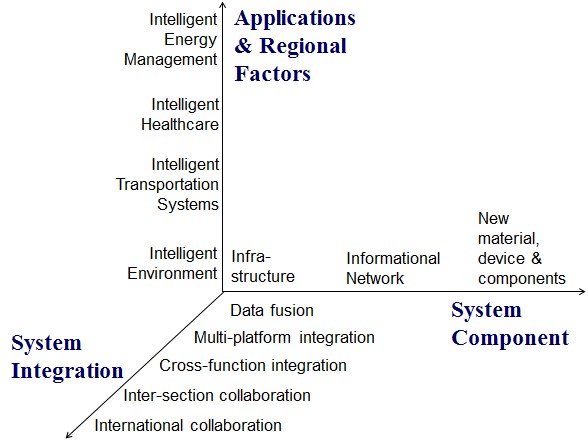Universal Villages
- Category: Circuits & Systems
- Tags: berthold horn, ichiro masaki, yajun fang
Due to growing populations in cities, resources for city and village residents have become scarce while costs for public services including medical services have become unaffordable for societies and residents in more and more areas. Research on universal villages has attracted much attention in order to improve service efficiency and quality, to enhance residents’ health, to effectively manage resources, and to reduce energy consumption for environmental protection. It is an urgent task for current societies with growing populations of seniors, especially for countries like China and India with rapid development, large populations, and high growth rates of senior populations. Our research plans to target these problems and address the challenges.
We expect to develop technologies to understand human and urban activities on multiple scales. Full understanding of daily family routines helps to provide intelligent safety monitoring, monitoring of children and seniors, cooking, heating and cleaning, etc. Full understanding of current human activities for a building makes intelligent energy saving possible with least disturbance. In-time understanding of traffic and road situations allows a central control to respond to accidents faster than before. Systematic understanding of such information allows cities to react intelligently. We would like to develop intelligent health monitoring systems that can provide early warning for people before they feel physically sick. We also want to develop technologies that provide distributed medical treatment and tele-healthcare, which are expected to provide patients more mobile freedom.
Our research is related to both system engineering and system element studies, and also aims to explore region-dependent models, development paths, and key technologies. Our research subjects occupy the three following dimensions in Figure 1: system component, applications and regional factors, and system integration. We believe that improving the quality of living depends not only on advances in health care, transportation, housing, communication, information, energy, etc, but also on system integration among multiple platforms, different fields, etc.
- I.~T.~S. of~America, “National intelligent transportation system program plan: A ten-year vision, United States Department of Transportation, Tech. Rep., 2002.
- Y. Fang, S. Yokomitsu, B. Horn, and I. Masaki, “A layered-based fusion-based approach to detect and track the movements of pedestrians through partially occluded situations,” presented at IEEE Intelligent Vehicles Symposium, 2009.
- B. Horn, Y. Fang, and I. Masaki, “Hierarchical framework for direct gradient-based time-to-contact estimation,” presented at IEEE Intelligent Vehicles Symposium, 2009.
- Y. Fang, B. K. P. Horn, and I. Masaki, “Systematic information fusion methodology for static and dynamic obstacle detection in ITS,” presented at 15th World Congress on ITS, 2008.
- B. K. P. Horn, Y. Fang, and I. Masaki, “Time to contact relative to a planar surface,” presented at IEEE Intelligent Vehicles Symposium, 2007.
